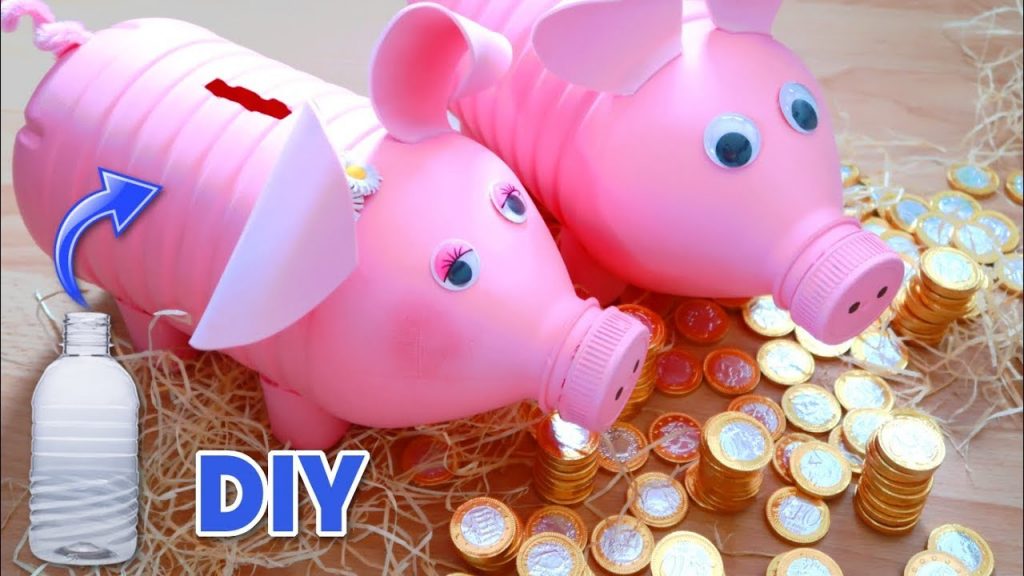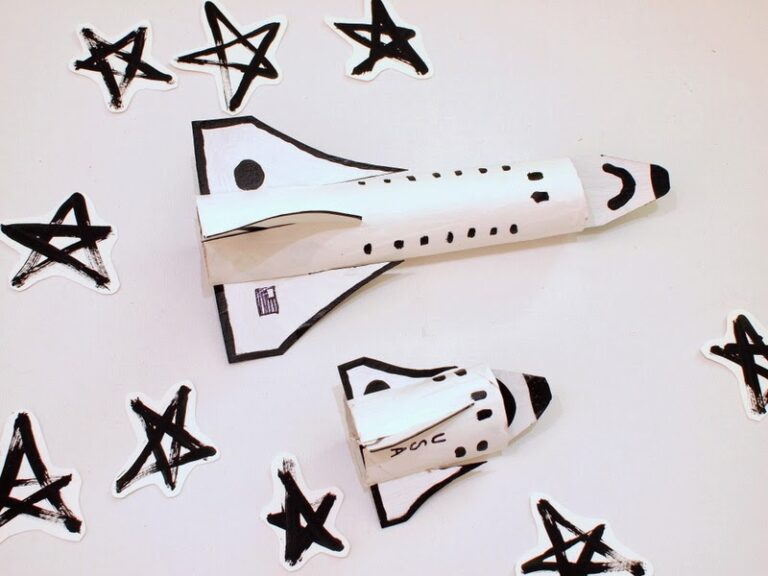Anúncios
Combining environmental learning with economic practices is a great way to educate and entertain. Making a piggy bank out of a plastic bottle is an activity that not only promotes recycling, but also provides a fun opportunity to develop manual skills. Below, you will find a detailed guide to making your own piggy bank out of a plastic bottle, with a list of materials and easy-to-follow steps.

Necessary Materials
To start the project, you will need the following materials: paintbrush, pink paint, two toilet paper tubes, blunt scissors, pink tissue paper, 2-liter PET bottle, glue, utility knife, cardboard (you can use half a shoebox lid), pink button with two holes and a piece of used notebook spiral.
Preparing the Materials to Make a Piglet with a PET Bottle
The first step is to prepare all the materials. Paint the outside of the two toilet paper tubes and one part of the cardboard pink. Let it dry well. In the meantime, prepare the PET bottle, which will be the base of your piggy bank.
PET Bottle Cover
To create the base of the piggy bank, start by covering the PET bottle. Cut the tissue paper into small squares or paint a newspaper pink and do the same process. Using a paintbrush, apply a layer of glue diluted in water to a small part of the clean, empty PET bottle. Glue the squares of tissue paper onto the bottle, covering it completely, including the cap. Apply a final layer of glue diluted in water over the entire surface and let it dry. Don't forget to glue the pink button onto the bottle cap to create the piggy bank's nose.
Making the Ears
To make the ears, cut out the pink cardboard in the shape of the letter “U”. Make two small slits at the base of each ear and fold these bases back to glue them to the PET bottle. The ears should be attached to the top of the bottle.
Tail Assembly
Use the craft knife to make a small slit in the piggy’s “back.” This step should be done carefully, and it’s recommended that an adult help you if you’re working on this project with a child. Insert a piece of used notebook spiral into the slit to create the tail.
Making the Paws
For the legs, cut each toilet paper roll into two pieces. Adjust the size of each leg so that it fits snugly around the bottle and glue them to the base of the piggy bank.
Final Details
Use the unpainted piece of cardboard to draw the eyes. Cut out and glue the eyes to the front of the PET bottle, ensuring that the piglet looks adorable.
Feel free to add some personalized details to your piggy bank. You can use different colors and materials to create interesting patterns or textures. If you don’t have pink tissue paper, you can use colored paper or even fabric to cover the plastic bottle.
Always be careful when using the craft knife. If this is a project for children, make sure an adult is supervising the activity.
Online Courses and Learning
If you are interested in expanding your knowledge about the environment and recycling techniques, consider enrolling in online courses. There are affordable options with video lessons, tutoring, and certification, such as Cursos 24 Horas. These courses offer an opportunity to learn more about sustainable practices and contribute to environmental preservation more effectively.
Creating a piggy bank out of a plastic bottle is a fun and educational way to promote recycling and environmental awareness. By following these simple steps, you’ll not only be reusing materials that would otherwise be thrown away, but you’ll also be encouraging sustainable practices. Plus, projects like this are a great way to get kids and adults involved in activities that benefit the planet.
So why not get started today? Turn a plastic bottle into an adorable piggy bank and make a difference in the world around you. If you’re interested in learning more about recycling techniques and environmental education, don’t hesitate to explore the courses available online. Take this opportunity to do your part in protecting the environment and making the world a better place for everyone.
Check out other interesting facts about recycling clicking here.
Learn how to make art by recycling, Click here.




